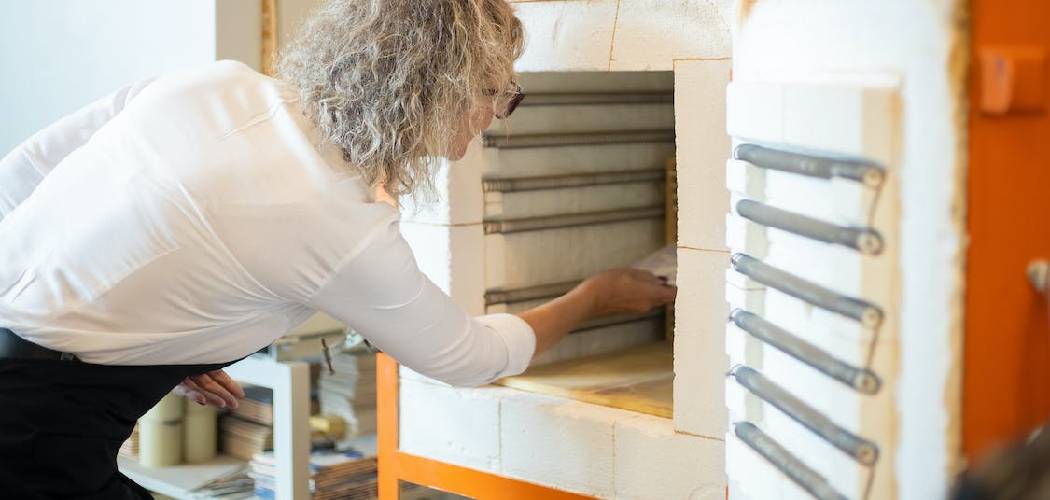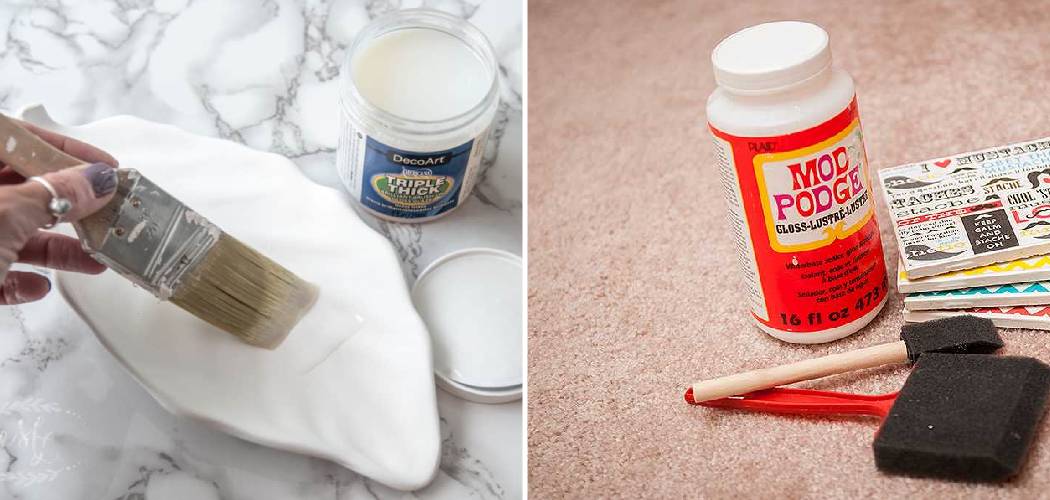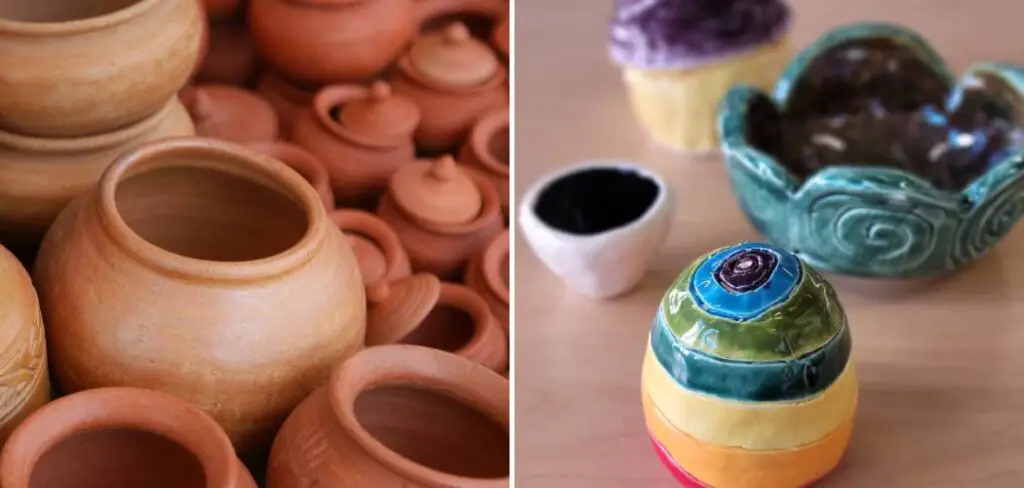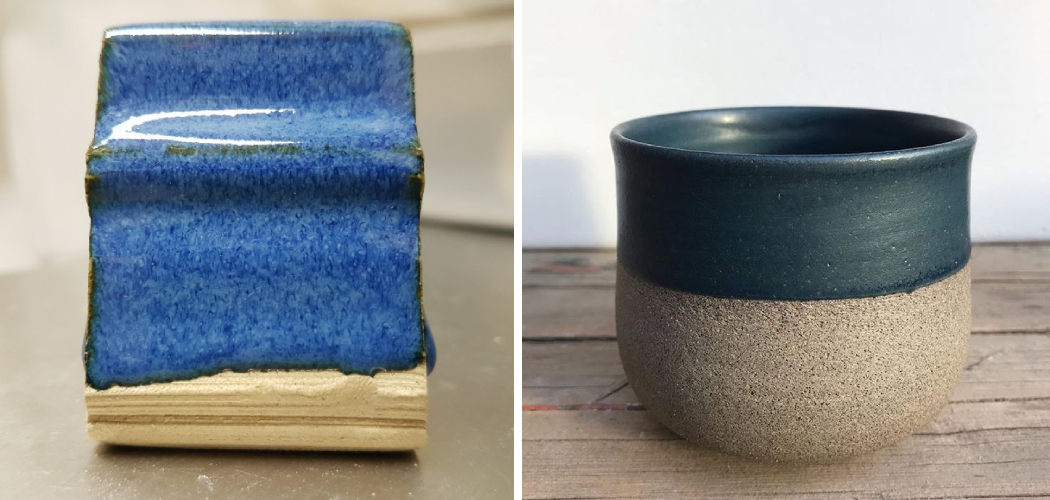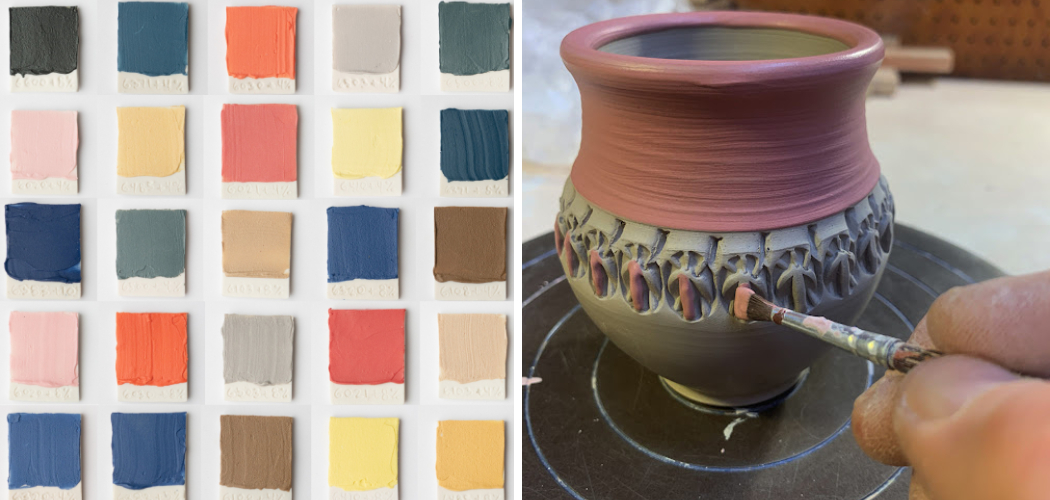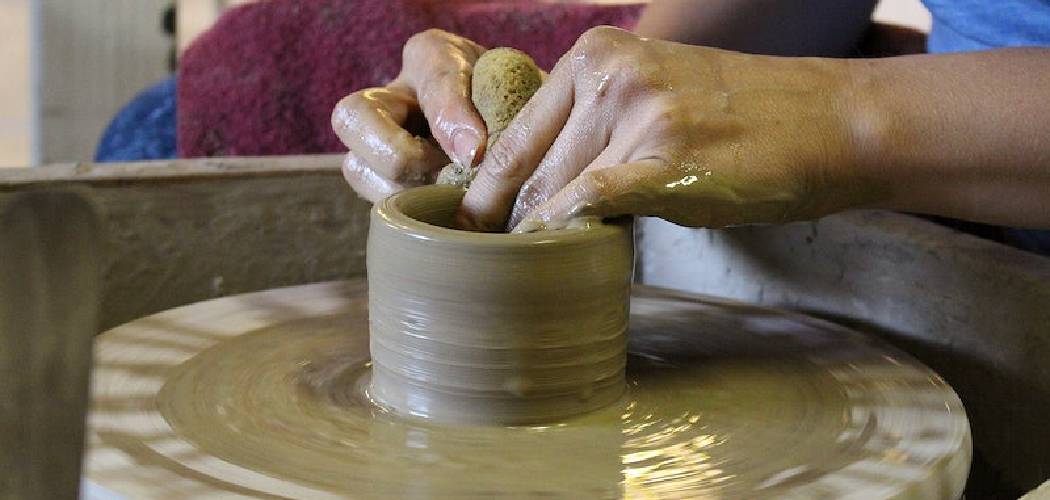Glaze is made of silica, alumina, and flux. These components create a glassy coating when fired in a kiln.
Glaze plays a crucial role in ceramics, enhancing both functionality and aesthetics. Silica provides the glassy structure, alumina offers stability, and flux lowers the melting point. This combination allows for a durable, beautiful finish on pottery and tiles. Glazes can be clear, colored, glossy, or matte, depending on the specific formulation and firing process.
Artists and manufacturers can tailor glazes to achieve desired effects, making them an essential element in ceramic artistry. Understanding the basics of glaze composition helps in selecting the right type for specific projects, ensuring the best results in durability and appearance.
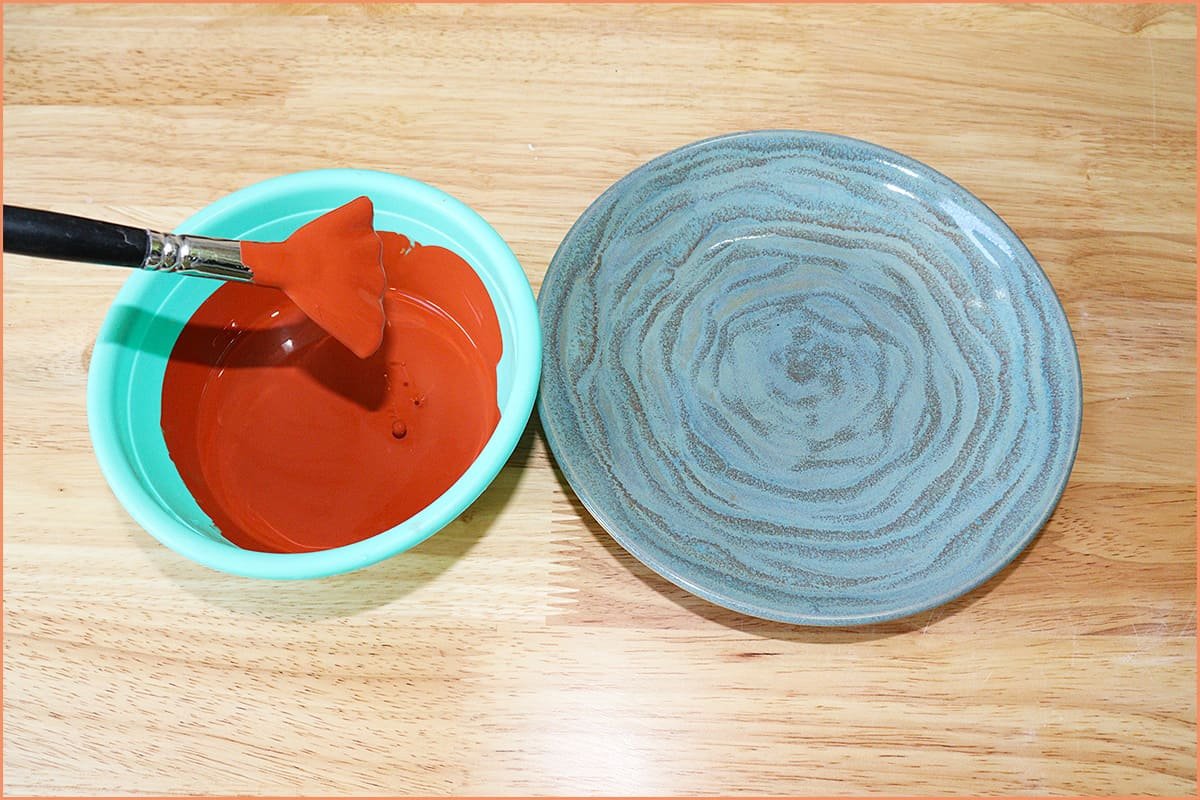
Credit: potterycrafters.com
The Essence Of Glaze
Glaze is a special coating applied to ceramics. It transforms plain pottery into beautiful art. Glaze is made of various materials. These materials melt and fuse with the ceramic surface. This process creates a glassy, smooth finish.
The Role In Ceramics
Glaze serves multiple functions in ceramics. It provides a protective layer. This layer makes the ceramic more durable. It also makes the surface waterproof. Glaze enhances the visual appeal of the pottery. It adds color, texture, and shine. The combination of minerals and oxides in glaze creates unique effects.
Historical Significance
Glaze has a rich history in ceramics. Ancient civilizations used it to decorate pottery. The Egyptians were among the first to use glaze. They used it to create beautiful, colorful pieces. Chinese potters mastered glazing techniques. They developed stunning porcelain pieces. Glaze was also significant in Islamic art. It contributed to the intricate tile work in mosques.
| Component | Function |
|---|---|
| Silica | Forms the glassy structure |
| Alumina | Stabilizes the glaze |
| Flux | Lowers melting point |
| Colorants | Adds color |
- Protects the ceramic surface
- Adds aesthetic value
- Makes ceramics waterproof
- Enhances durability
- Ancient Egypt – decorative pottery
- China – porcelain masterpieces
- Islamic Art – mosque tiles
Core Ingredients
Understanding the core ingredients of glaze reveals its unique properties. These ingredients each play a crucial role. Let’s explore the main components that make up a glaze.
Silica: The Glass Former
Silica is the primary ingredient in glaze. It forms the glassy surface. This element is essential for creating the shiny finish. Silica is often sourced from sand or quartz.
Without silica, the glaze would lack its glass-like appearance. Silica melts at a high temperature, which makes it a key player in the glaze’s formation.
Alumina: The Stabilizer
Alumina acts as a stabilizer in the glaze mixture. It helps to control the flow of the glaze. This ingredient prevents the glaze from running off the pottery piece.
Alumina also enhances the glaze’s durability. It ensures the glaze stays intact during the firing process. Common sources of alumina include clay and feldspar.
Fluxes: Lowering The Melting Point
Fluxes are vital for reducing the melting point of the glaze. They allow the glaze to melt at a lower temperature. This is important for achieving the desired finish without damaging the pottery.
Fluxes come from various sources, including minerals and chemicals. Some common fluxes are potassium, sodium, and calcium. These elements work together to create a smooth, even glaze.
Here’s a quick overview of common fluxes and their sources:
| Flux | Source |
|---|---|
| Potassium | Feldspar |
| Sodium | Soda Ash |
| Calcium | Limestone |
These ingredients work in harmony to create a beautiful glaze. Each component is essential for the final product’s quality.
Color And Texture Variations
Understanding the color and texture variations of glaze can elevate your ceramic projects. Different materials and techniques create unique results. Let’s explore how glazes can vary in color and texture.
Metal Oxides And Stains
Glazes derive their vibrant colors from metal oxides and stains. These materials react with the clay and heat. Common metal oxides include:
- Cobalt Oxide – Produces blue hues
- Iron Oxide – Yields reds, browns, and blacks
- Copper Oxide – Creates greens and reds
Stains are commercially prepared colors. They offer more consistency. Using different stains and oxides can produce a spectrum of colors.
Glossy Vs. Matte Finishes
Glazes can also vary in texture. The main types are glossy and matte finishes.
| Finish Type | Characteristics |
|---|---|
| Glossy Finish | Shiny, reflective, and smooth |
| Matte Finish | Dull, non-reflective, and textured |
Glossy finishes are often easier to clean. Matte finishes provide a more natural look. Choosing the right finish can impact the final appearance of your piece.
Types Of Glazes
Understanding the different types of glazes can help you choose the right one for your pottery projects. Glazes come in various forms, each offering unique characteristics and finishes. Here, we’ll explore the three main types: transparent, opaque, and special effect glazes.
Transparent Glazes
Transparent glazes are clear and allow the clay’s natural color to show through. They are perfect for enhancing the underlying design or texture of your pottery. These glazes are often used for functional pieces like dishes and mugs.
- Clear Glossy Glaze: Shiny and smooth, ideal for a polished look.
- Clear Matte Glaze: Offers a subtle, non-reflective finish.
- Tinted Transparent Glaze: Adds a slight hue while remaining see-through.
Opaque Glazes
Opaque glazes completely cover the clay, hiding its natural color. They are great for adding solid, vibrant colors to your pieces. These glazes are commonly used for decorative items.
- Glossy Opaque Glaze: Provides a bright, reflective surface.
- Matte Opaque Glaze: Gives a soft, non-shiny finish.
- Satin Opaque Glaze: Offers a smooth, semi-gloss finish.
Special Effect Glazes
Special effect glazes create unique textures and patterns on your pottery. They can make your pieces stand out with interesting visual effects. These glazes are ideal for artistic and experimental projects.
- Crackle Glaze: Produces a cracked, antique look.
- Crystalline Glaze: Forms crystal patterns on the surface.
- Reactive Glaze: Creates varied colors and textures upon firing.
The Firing Process
Firing is a crucial step in glazing. It transforms the raw glaze into a glass-like coating. This process involves heating the glazed object to high temperatures in a kiln. The firing process can vary based on the type of firing used. Let’s explore the different types of firings and their impacts on glaze.
Oxidation And Reduction Firings
Oxidation firing occurs in an environment with plenty of oxygen. This method is common in electric kilns. It results in bright and predictable glaze colors.
Reduction firing reduces the oxygen in the kiln. This method is typical in gas kilns. It creates unique and varied glaze effects.
The choice between oxidation and reduction firing impacts the final appearance of the glaze. Some glazes need specific firing types to achieve desired results.
Temperature’s Impact
Temperature plays a vital role in the firing process. Different glazes melt at different temperatures.
Here’s a simple table to illustrate the temperature ranges for various types of glazes:
| Type of Glaze | Temperature Range (°C) |
|---|---|
| Low-Fire Glaze | 950-1100 |
| Mid-Fire Glaze | 1100-1250 |
| High-Fire Glaze | 1250-1350 |
Low-fire glazes produce bright colors. Mid-fire glazes offer a balance between durability and color. High-fire glazes are the most durable.
Consistent temperature control ensures the glaze matures properly. Uneven heating can lead to defects like pinholes or crazing.
Safety Considerations
Glaze can make pottery beautiful and functional. But it is important to handle glazes safely. This section will discuss some key safety considerations for working with glaze.
Toxicity Awareness
Some glazes contain toxic substances like lead and cadmium. These chemicals can be harmful if ingested or inhaled. Always check the labels on your glaze materials. Look for warnings and safety instructions.
- Lead: Can cause serious health problems.
- Cadmium: Linked to kidney and lung issues.
- Barium: May affect the heart and nervous system.
Wear protective gear like gloves and masks. This minimizes direct contact with harmful substances. Keep food and drinks away from your work area. This helps prevent accidental ingestion.
Proper Ventilation
Proper ventilation is crucial when working with glazes. Many glazes emit fumes that can be dangerous. Ensure your workspace has good air circulation.
Consider using exhaust fans or open windows. This helps remove toxic fumes from the area. If working indoors, avoid confined spaces. A well-ventilated room is safer for your health.
Here is a simple checklist for proper ventilation:
- Open windows and doors.
- Use exhaust fans.
- Avoid confined spaces.
By following these steps, you can create a safer environment for glazing. Always prioritize your health and safety.
Diy Glaze Creation
Creating your own glaze can be a fun and rewarding experience. It allows you to customize colors and textures to fit your unique artistic vision. Whether you’re a beginner or an expert, DIY glazes offer endless possibilities.
Basic Recipes
Start with simple recipes to get the hang of glaze creation. Here’s a basic recipe to begin with:
| Ingredient | Quantity |
|---|---|
| Silica | 25% |
| Alumina | 15% |
| Flux (Feldspar) | 35% |
| Clay | 25% |
- Mix all ingredients together.
- Add water until you get a smooth consistency.
- Apply to your pottery and fire it in a kiln.
Customizing Your Own Glazes
Once you master the basics, you can start customizing your glazes. Here are some tips:
- Color: Add oxides or stains to change the color.
- Texture: Use different clays to alter the texture.
- Finish: Adjust the silica content for a glossy or matte finish.
Experiment with different combinations to create unique effects. Write down your recipes for future reference. Keep testing and refining your glazes to achieve the perfect look.
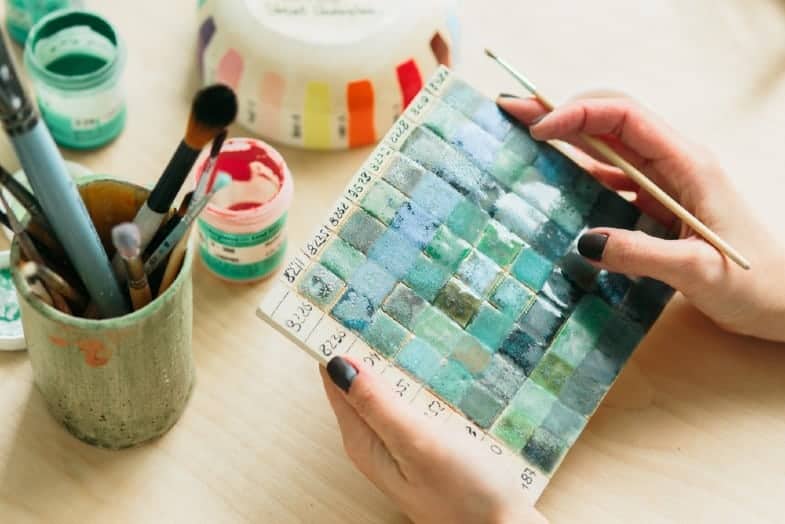
Credit: thepotterywheel.com
Troubleshooting Common Issues
Creating the perfect ceramic glaze can be challenging. Many potters face issues. Below are common problems and solutions.
Crazing And Cracking
Crazing refers to tiny cracks on the glaze surface. These occur due to stress. The clay and glaze expand and contract differently. This causes crazing.
Cracking happens during the drying or firing process. It can ruin the pottery. Cracking occurs when the glaze is too thick or the firing is too fast.
| Issue | Cause | Solution |
|---|---|---|
| Crazing | Different expansion rates | Adjust the glaze formula |
| Cracking | Thick glaze or fast firing | Apply thinner glaze layers |
Glaze Defects And Fixes
Various defects can ruin a glaze. Common issues include pinholes, blisters, and crawling.
- Pinholes: Tiny holes in the glaze caused by escaping gases.
- Blisters: Bubbles trapped in the glaze.
- Crawling: The glaze pulls away, leaving bare spots.
- Pinholes: Fire the kiln slower to remove gases.
- Blisters: Use a thinner glaze and avoid over-firing.
- Crawling: Clean the bisque ware properly before glazing.
Future Of Glazing
The future of glazing promises exciting advancements. New technologies and sustainable practices are leading the way. Innovations in glaze chemistry and eco-friendly methods are transforming the industry.
Innovations In Glaze Chemistry
Innovations in glaze chemistry are changing the landscape. Scientists are developing new formulas. These formulas enhance durability and aesthetic appeal. Advanced glazes can now mimic natural materials like marble or wood.
Nanotechnology is a key player. It allows for self-cleaning surfaces. These surfaces repel dirt and water. This reduces maintenance and extends the lifespan of the glazed item.
- Enhanced Durability
- Natural Material Mimicry
- Self-Cleaning Surfaces
Sustainable Practices In Glazing
Sustainable practices in glazing are gaining momentum. Eco-friendly materials are becoming more popular. They reduce the carbon footprint. Recycled glass and lead-free glazes are examples of this trend.
Energy-efficient kilns are also making a difference. They use less energy and produce fewer emissions. This contributes to a greener planet. The push for sustainability is driving innovation in the industry.
| Eco-Friendly Materials | Benefits |
|---|---|
| Recycled Glass | Reduces Waste |
| Lead-Free Glazes | Non-Toxic |
- Reduced Carbon Footprint
- Energy-Efficient Kilns
- Fewer Emissions
The future of glazing is bright. With these advancements, the industry is set to thrive. Embracing innovations and sustainable practices will lead to better products and a healthier planet.
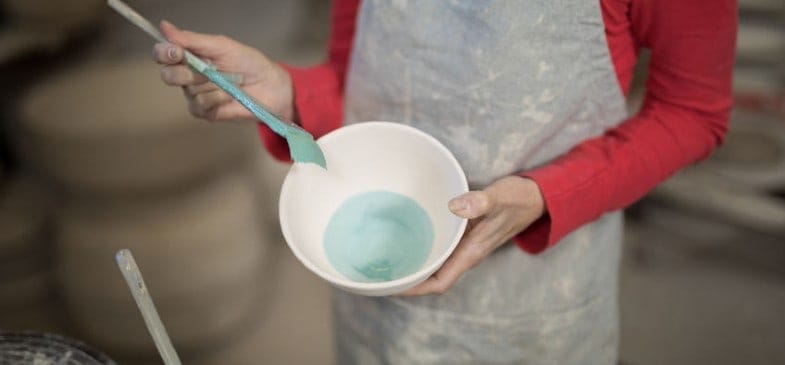
Credit: thepotterywheel.com
Frequently Asked Questions
What Is Glaze Made Of?
Glaze is made of silica, flux, and alumina. Silica provides the glassy surface. Flux lowers the melting point. Alumina adds stability and durability.
How Is Ceramic Glaze Created?
Ceramic glaze is created by mixing silica, flux, and alumina. These materials are ground into a fine powder. The powder is then suspended in water to form a liquid.
What Are The Main Components Of Glaze?
The main components of glaze are silica, flux, and alumina. Silica forms the glassy surface. Flux helps the glaze melt. Alumina provides stability and durability.
Can Glaze Have Color?
Yes, glaze can have color. Colorants like metal oxides are added to the glaze. Common colorants include iron oxide, cobalt oxide, and copper carbonate.
Conclusion
Understanding what glaze is made of helps you appreciate its role in ceramics and cooking. From minerals to sugars, each ingredient serves a purpose. Experimenting with different glazes can enhance your creations. Dive into the world of glazes and discover new techniques to elevate your projects.
